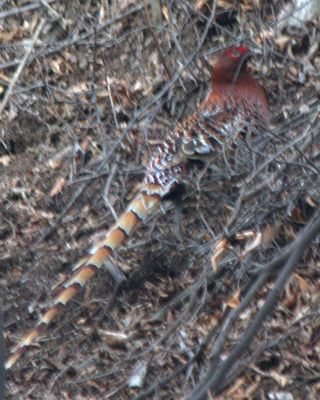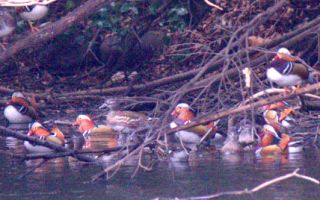Lake Miyagase © Chris Cook
Wild Watch Hotspot: Lake Miyagase
By Mark Brazil | Aug 31, 2018
Lake Miyagase, Kanagawa Prefecture
Southwest of Tokyo, about an hour by express train and another 45 minutes by bus, lie the thickly forested Tanzawa Mountains. On the northeast side is a reservoir known as Lake Miyagase (Miyagase-ko). The lake lies within the Aiko District of Kanagawa, between Sagamihara and Atsugi.
It offers views of the Tanzawa Mountains, including Mt Hiru. The lake was formed following the construction of the Miyagase Dam, to provide a source of drinking water for the cities of Yokohama and Tokyo.
Within the Tanzawa range are several lakes, and one in particular that is visiting is Lake Miyagase. It is easily reached by bus from Hon-Atsugi Station, which is on the Odakyu train line from Shinjuku, in central Tokyo.
The area is well-known as one in whcih to search for Crested Kingfisher and Mountain Hawk Eagle.
The lake and surroundings are a popular destination during the winter months for local photographers who go there to take photos of Long-tailed Rosefinch, Daurian Redstart and an assortment of buntings. Small numbers of Japanese Accentor also occur here in winter.
On a fine day, the blue bridge over the Hayato River attracts a small crowd of dedicated eagle photographers, and anywhere in the surrounding forests, the eternally elusive Copper Pheasant can be found.
Directly east of the bus stop – about a 10-minute walk – is an open park-like area with a small lake which attracts various ducks as well as Grey Heronand Great White Egret. Along the streams look for Brown Dipper and Common Kingfisher, and in the open grassy areas where there are small trees or bushes, wintering Bull-headed Shrike and Dusky Thrush can be found.
The main area to check is the Hayato-rindo (forest track) which is closed to ordinary traffic. This is where the photographers can be found, staking out their subjects, and the track runs alongside the lake. From the vantage points look for Western Osprey, Little Grebeand, during the winter, Mandarin Duck.
It is about 5 km from the entrance to the blue bridge, so it is a good idea to carry your lunch and something to drink to make it possible to eat a picnic along the way while watching for Crested Kingfisher and Mountain Hawk Eagle.
Early on summer mornings (May, June, July) Miyagase's forests are alive with the morning chorus of birdsong including those of: Blue & White Flycatcher and Narcissus Flycatcher, Japanese Thrush and Japanese Grosbeak, and also the mournful song of the White-bellied Green Pigeon.
Public Transport details: The bus departs from the north side of Hon-Atsugi Station, from bus stop #5 (in front of the Lawson convenience store). The destination is Miyagase, the final stop of the #20 bus.
From Miyagase, the last Kanachu Busof the day leaves just before 2000: most buses depart at 10 minutes to the hour (17:50, 18:50, 19:50). There are toilets by the bus stop, but no facilities once you are beyond the entrance of the forest road.
The entrance to the Hayato-rindo can be found at map reference: 35.525193, 139.222435, while the blue bridge over the Hayato River can be found at map reference: 35.520043, 139.203595.
Outro
Mark’s latest book, A Field Guide to the Birds of Japan, was published in summer 2018 in the UK. A digital edition has also been released. This is the first English-language field guide to the birds of Japan published since 1982.
If you would like to read more about Japan’s natural (and un-natural) history, then you may enjoy The Nature of Japan: From Dancing Cranes to Flying Fisha collection of Mark’s essays now in its second edition.
Author, naturalist, lecturer and expedition leader, Dr Mark Brazil has written his Wild Watch column continuously since April 1982, first in The Japan Times for 33 years, and since 2015 here on this website. All Wild Watch articles dating back to 1999 are archived here for your reading pleasure.
Two handy pocket guides The Common and Iconic Birds of Japan and The Common and Iconic Mammals of Japan have also been published and along with The Nature of Japan are available from Goods from Japan.


